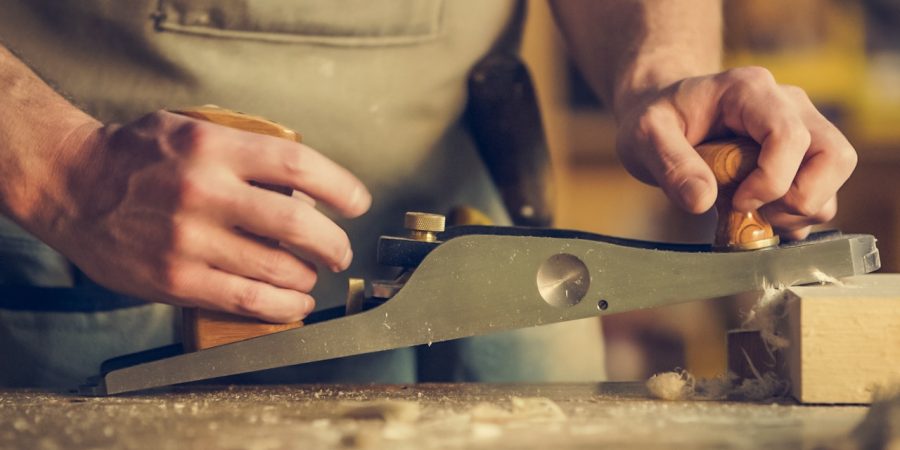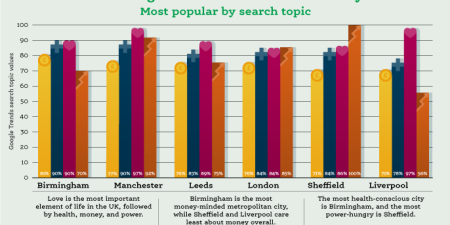There are a few different types of insurance coverages that a carpenter should consider, including public liability, tools cover, personal accident, and employers’ liability. What you need and don’t need will naturally depend on the type of work you do, the size of your business, and your preferences for what you are and aren’t covered for. Every carpenter is different, so it’s important to be able to make your own, informed decisions on what carpenter insurance you require.
Public liability is generally considered a must-have by most carpenters and joiners. It’ll protect you if a customer sustains property damage or injury as a result of your work and believes you’re at fault, leading to them suing you for compensation. It could be something as simple as staining their carpet, or something as serious as leaving a toolbox out that results in them falling and having to take time off work – with public liability, you know you’ll be covered, both for any compensation awarded against you and any legal expenses you need to pay as a result of your legal defence in court.
Employers’ liability is a legal requirement for any business in the UK that hires staff, whether they’re full-time or part-time, employee or contractor. It’ll cover you if they become unwell or are injured while working for you and sue you believing you’re at fault. As with public liability, it’ll cover you for any compensation a court awards in their favour, and any costs you incur during your legal defence.
Tools and equipment cover, perhaps unsurprisingly given its name, will protect the tools you use against theft, accidental damage, or loss. It’ll cover the costs of paying for a replacement/equivalent piece of kit, allowing you to quickly return to work and limiting the negative impact on any of your customers. It isn’t a legal requirement, but if you feel there are tools or equipment that you’d struggle to operate without (or might not immediately be able to afford to replace) then it’s worth considering.
If you’re using a personal vehicle to support your business then you’re legally required to upgrade your coverage to business use insurance. It covers driving between multiple work locations, such as between client sites. While it can feel like an unnecessary additional cost, regular social, domestic and pleasure vehicle insurance will not cover driving between different jobs. The penalties for being caught without the correct insurance are severe – unlimited fines, points on your license, and even disqualification from driving altogether.
Finally, if you’re not sure how you’d cover your bills or monthly outgoings if you had to take time off of work unexpectedly, you might want to consider personal accident or income protection insurance. It’ll cover you if an accident or illness forces you to take time off of work, covering a % of your average weekly income until you’re ready to return.
Carpenter insurance
Carpenters insurance is a statement of any good carpenter or joiner. It’ll allow you to do your work without the fear of an accident or some other disaster that could potentially cost you a lot of money, and will show your customers that you’re a considerate, risk-averse carpenter who will take the necessary steps to ensure that both you and your clients are appropriately protected while working.
Almost all carpenters insurance policies will include public liability insurance, but if you’re looking for additional protection you could consider tools coverage to protect the equipment you use on a day-to-day basis and personal accident insurance to help protect your income if you ever need to take an extended period off of work due to injury or illness.
If you use a vehicle to support your carpentry/joinery business, then you’re legally required to upgrade your existing car or van insurance to at least business use level, and if you ever hire any staff (including contractors or part-timers) then you’ll need to have an employers’ liability policy.
Public liability insurance for a self-employed carpenter
Public liability is considered a must-have for any self-employed carpenter. It’ll protect you if you cause injury or property damage to any third parties, which would include your customers or any members of the general public.
It most commonly comes in 4 limits (the maximum amount the policy will payout for a claim) – £1M, £2M, £5M, and £10M. Insurers can offer you more or less depending on your needs, but don’t be surprised if it’s more difficult to get quotes online for anything less than £1M or more than £10M, so be prepared to contact your insurer of choice directly or request a callback.
Property Damage Example: You knock over an expensive vase while carrying a small cabinet through a customer’s home. They sue you to recover the cost and buy a replacement.
Injury Example: A wooden door you’ve left leaning against a wall falls onto one of your customers, injuring their back and forcing them to take 4 weeks off of work. They sue you to recover their lost income and to cover medical expenses.
Carpenter vs joiner
A joiner is a tradesman who creates the wooden furnishings/products that a carpenter then puts together on-site. A joiner is more likely to operate out of a workshop, which they might use to sell their products to carpenters who require something specific for a project.
There are many similarities between the two, and some tradesmen even offer both as part of their service, creating bespoke products that they then install themselves. If you’re wondering which one you require, it’s fairly simple to remember – a joiner will build something for you, and a carpenter would install it.









